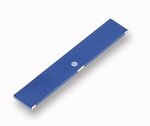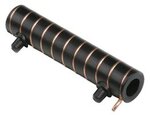Chetan Joshi
Newbie level 4
Hello,
I am trying to choose antenna for my PCB. My design is very small in size (7 x2 cm²). I am using a cc430 micro controller with integrated radio module. The radio module does not contain antenna and related circuitry and it is upon the user to decide how to use the antenna. With a frequency of 433 MHz, it is very difficult to operate with a printed antenna design and I think I have to choose discrete miniature antennas.
I checked on websites such as mouser and farnell where I found two types of antennas at 433 MHz frequency range.
1. Chip Antenna
2. Miniature Helix ( Both SMD and through hole configurations)
But I cannot decide on one of these two. Can anyone suggest why is one of these better than the other.
Also, can please somebody explain me the reason of one being very pricey (chip antenna) while the other is very cheap in comparison.
For reference, I am adding the datasheets of the components:
https://www.farnell.com/datasheets/311705.pdf
https://www.farnell.com/datasheets/1391934.pdf
https://www.linxtechnologies.com/resources/data-guides/ant-xxx-hexx.pdf

Chip antenna

Helix wound around plastic
Thanks a lot for your replies.
I am trying to choose antenna for my PCB. My design is very small in size (7 x2 cm²). I am using a cc430 micro controller with integrated radio module. The radio module does not contain antenna and related circuitry and it is upon the user to decide how to use the antenna. With a frequency of 433 MHz, it is very difficult to operate with a printed antenna design and I think I have to choose discrete miniature antennas.
I checked on websites such as mouser and farnell where I found two types of antennas at 433 MHz frequency range.
1. Chip Antenna
2. Miniature Helix ( Both SMD and through hole configurations)
But I cannot decide on one of these two. Can anyone suggest why is one of these better than the other.
Also, can please somebody explain me the reason of one being very pricey (chip antenna) while the other is very cheap in comparison.
For reference, I am adding the datasheets of the components:
https://www.farnell.com/datasheets/311705.pdf
https://www.farnell.com/datasheets/1391934.pdf
https://www.linxtechnologies.com/resources/data-guides/ant-xxx-hexx.pdf

Chip antenna

Helix wound around plastic
Thanks a lot for your replies.